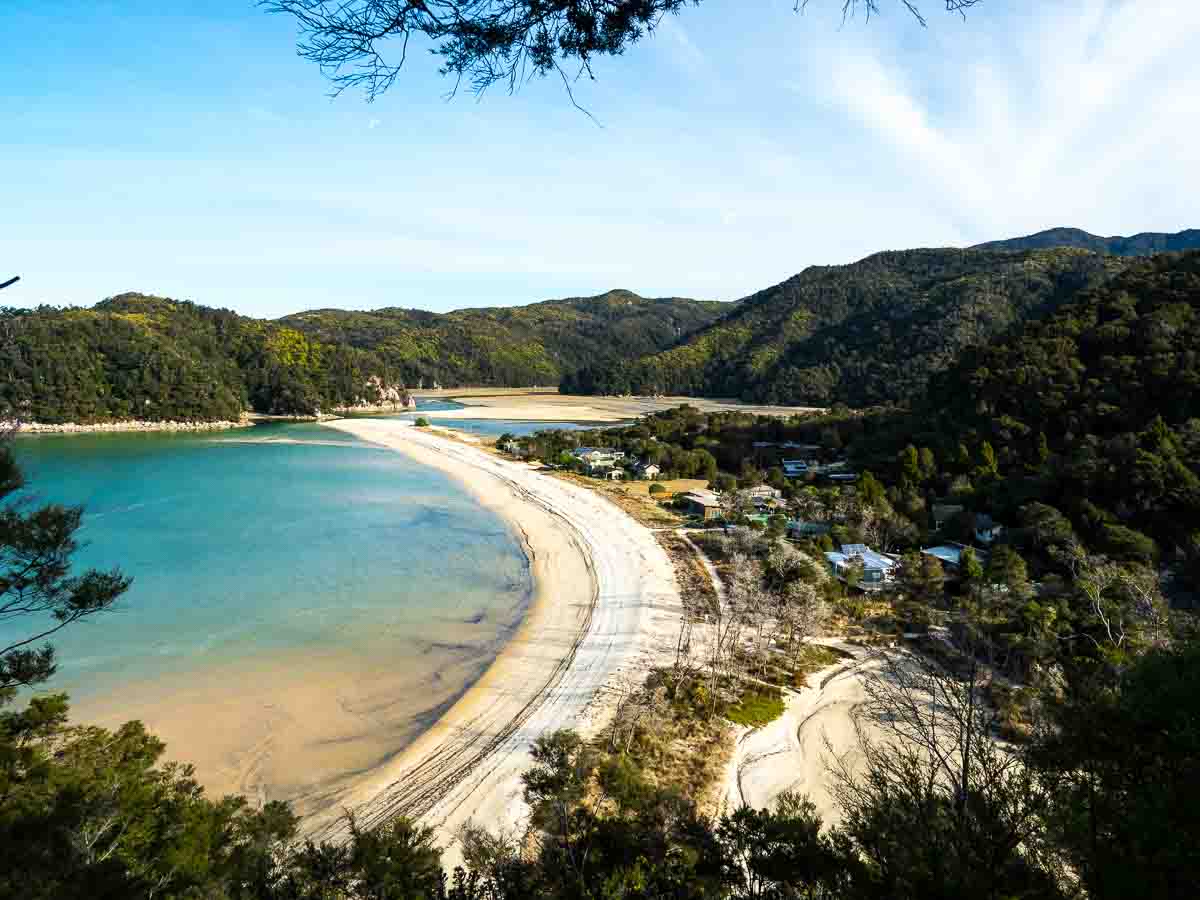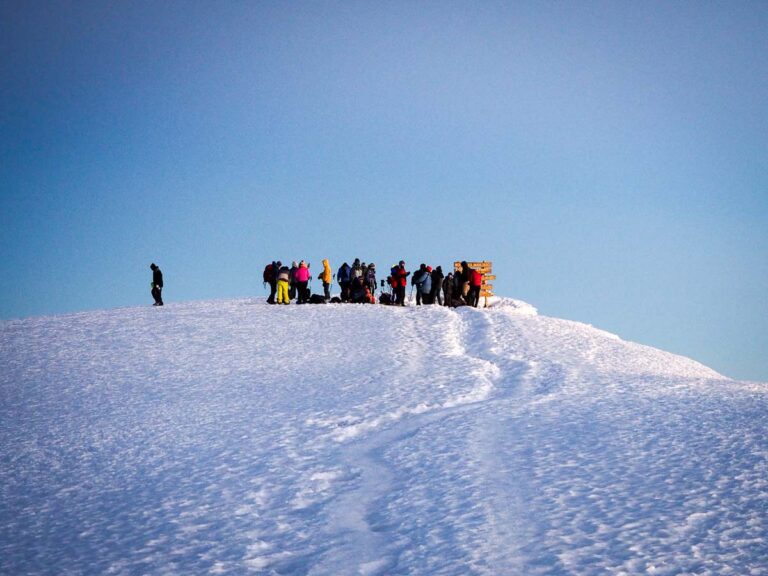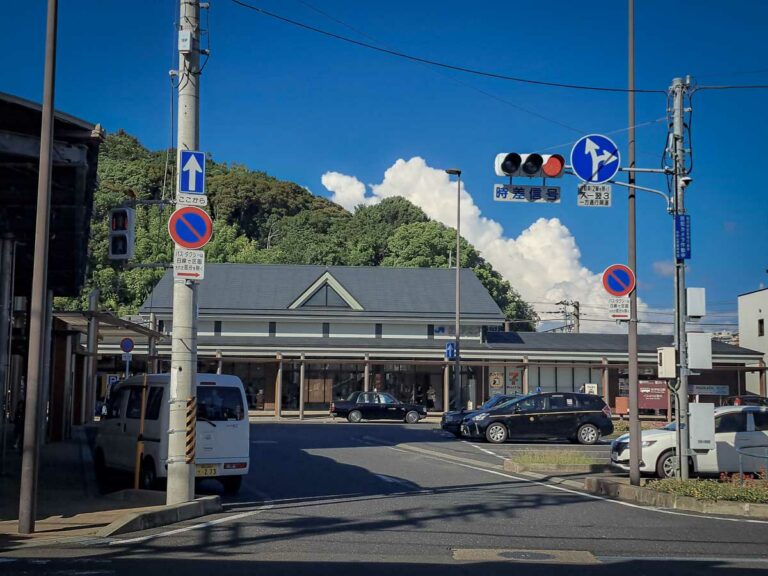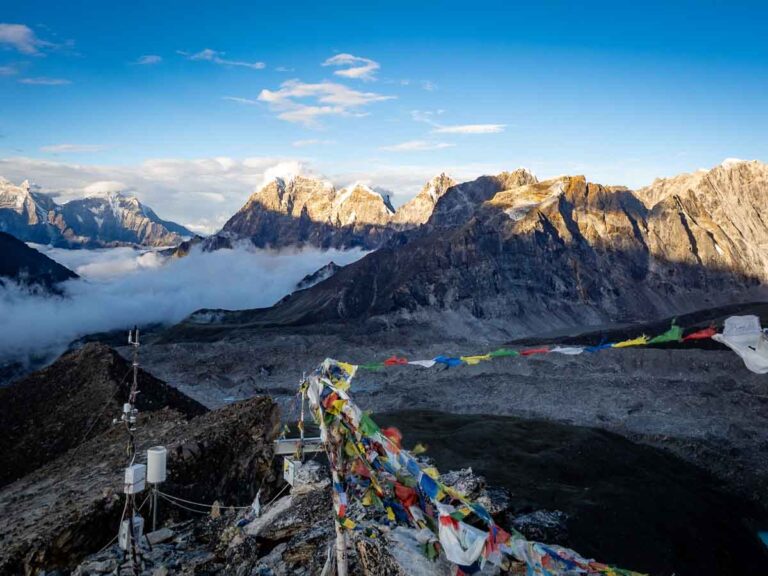Hiking The Abel Tasman Great Walk (My Tips)
Disclosure: I’ve hiked the Abel Tasman twice (almost). Once in the reverse direction from Totaranui to Marahau doing a car swap before setting out. The second time was in part from Marahau using the water taxi to return to our car at the start.
The Abel Tasman Coastal Track is one of the most popular walks in New Zealand. It follows the coastline of the Abel Tasman National Park, passing through beaches and lush forests. It can be walked in parts as a day hike, but it is most commonly done in 3 or 4 days as a Great Walk of New Zealand.
I had the chance to hike this amazing track and in this post, I’ll share my tips for making the most of the adventure.
Table of Contents
Quick Overview Of The Abel Tasman Coastal Track
The Abel Tasman Coastal Track is located in the north of the South Island in the Abel Tasman National Park. It’s 60 km long and takes 3 to 5 days to complete. You can walk it in either direction: from Marahau in the south to Wainui or Totaranui in the north, or vice versa. It’s mostly flat and easy, with some gentle climbs and descents. It’s best enjoyed when the weather’s warmer and drier–from October to April.
The track’s also advantageous in that you can walk the entire track or just a section of it by taking advantage of water taxis to navigate different points along the way.

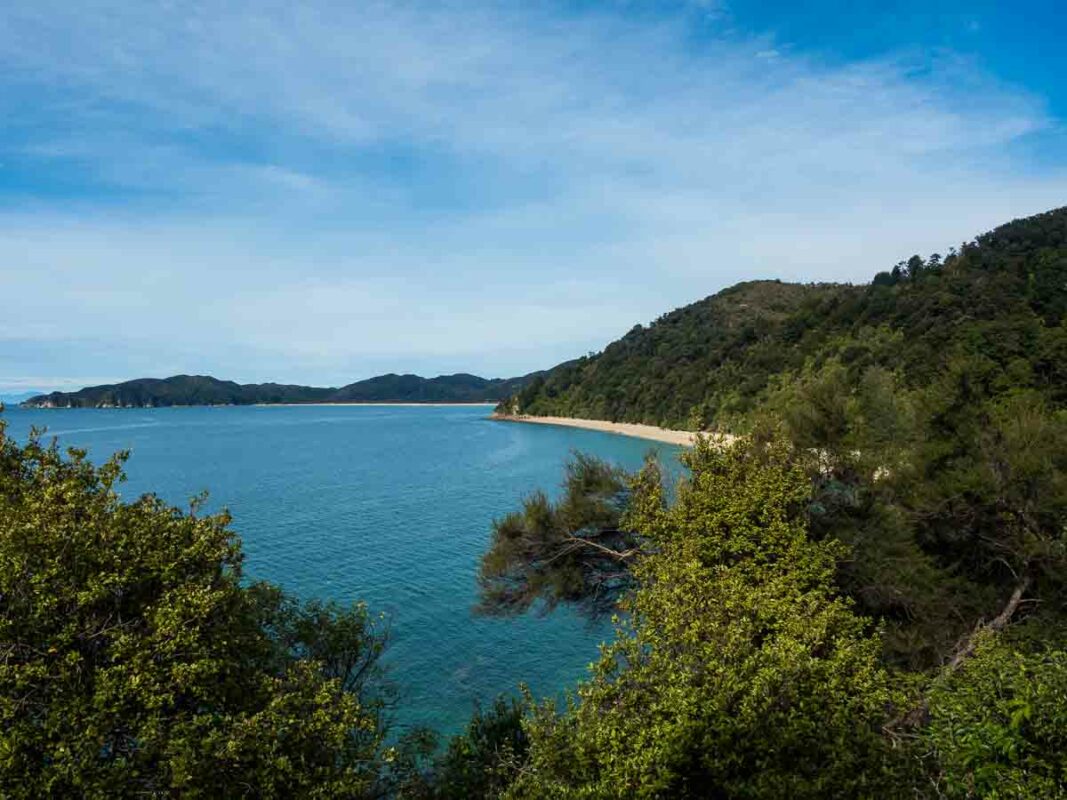
Abel Tasman Duration and Distance
You can expect to cover a distance of 60 km. But this can vary depending on your starting and finishing points. There are several side trips along the way, which extend the time spent on the trail if you decide to take them. The Abel Tasman is divided into four sections which can be completed in 3 to 5 days.
Jump To: Able Tasman Route Guide
How To Get To The Abel Tasman National Park
The nearest end of the abel tasman is Marahau which is a 1hr / 60km drive from Nelson. This is accessible by shuttle bus and is the point where the water taxis leave from too – so a good starting point if you don’t have your own vehicle.
Here are some of the ways to get to the park from Nelson.
By car
You can drive to either end of the track where you can leave your vehicle for free. You can also arrange for a shuttle bus or water taxi to pick you up or drop you off at either end.
By bus
There are regular buses from Nelson to Marahau and Totaranui. The journey takes about 1½ hours and costs around $30 NZD one way.
By water taxi
You can take a water taxi from Nelson or Kaiteriteri to any point along the track. This is a convenient way to return to your starting point.
I’ve done an excellent day trip into the Abel Tasman by taking the water taxi to Torrent Bay and then walking the 18km back to Marahau (stopping at Cleopatra’s pools along the way).
You can find more information on the Abel Tasman tourism website.
By Kayak
There are also options to hire kayaks and either experience the able tasman by sea, or Kayak the great walk and pitch your tent at beach campsites along the way. That’s probably a different guide to this one, which is about walking the Abel Tasman, but you can check our NZTravelTips for some deals on kayak rentals to get you started.
Three Main Route Options:
One of the fantastic things about this track is you can customize your route according to your preferences and abilities. You can walk the whole track or just a part of it, and you can start and finish at different points along the way. You can also combine walking with water taxis or shuttle buses to shorten or lengthen your trip. Here are some of the most common route options for walking the track:
Option 1: Walk most of the way and water taxi back
This is the best option if you want to see most of the track but don’t have enough time or energy to walk the whole way. You can start at either end of the track, and walk as far as you want, then take a water taxi back to your starting point. You can also choose which sections of the track you want to skip or include.
Option 2: Walk the whole way and shuttle back
If you want to complete the whole track but don’t want to walk back to the starting point, you can start at either end of the track, and walk all the way to the other end. From here, you can take a shuttle bus back to your starting point.
Option 3: Book A Shuttle Bus
You can book a shuttle bus service that will pick you up and drop you off at either end of the track. Several companies offer this service, but I found the likes of Golden Bay Coachlines and Abel Tasman Coachlines offer stellar services.
Option 4: Leave a car at each end
You can also leave your car at Marahau or Totaranui and drive back to your starting point after finishing the walk. While this option is flexible and convenient, be mindful that you’ll need to pay for two car parks and arrange for someone to transfer one of the cars back to where you started.
What I Did: We did a car swap by meeting first at the Maharua Beach car park where we left one car, then drove over the hill to Totaranui
Which Direction Is Best To Walk?
The path can be walked in either direction, from Marahau in the south to Totaranui in the north, or vice versa.
There is no right or wrong route because they both provide a fantastic experience and a different perspective of the trail. To help you decide which will be your starting point, here are some factors to consider.
Scenery
If you’re looking to take in the beauty of the trail, I recommend you walk from north to south. This path is more varied and scenic. But. I’ve encountered some walkers who prefer the southern section because they felt it allowed them to end on a high note.
Tides
There are 4 tidal crossings that can only be crossed at low tide. The tide schedule varies depending on the day and month, so you need to check it before you start your walk and plan accordingly. Generally speaking, walking from south to north may give you more flexibility and convenience. You can start your walk at any time of the day and adjust your pace and stops according to the tide. Walking from north to south requires more planning and coordination, and you may need to start your walk early in the morning or late in the afternoon to catch the low tides.
Accommodation
You’ll encounter 4 huts and 18 campsites along the track. When booking, consider how far you want to walk each day, how comfortable you want to be, and how much you want to spend. I prefer staying in huts because they offer more amenities and security, but they don’t come cheap. And during the peak season, they can get really crowded. If you want the luxury of freedom and privacy, you can definitely opt for campsites. Staying at campsites also requires more packing: bringing your own tent, sleeping bag, mat, stove, and utensils.
Abel Tasman Water Taxis
One of the unique features of this track is that you can use water taxis to access different sections. They really came in handy and helped me to get to and from the trail and to skip parts I didn’t want to walk or that were closed.
There are several water taxi companies with different services and prices. Water taxis usually depart from Marahau or Totaranui. They can take you to any point along the track and can also take you to some of the side trips or attractions along the way, giving you a chance to spot some of the wildlife.
While they are very convenient in every sense of the word, there are some drawbacks you should be aware of:
- They are subject to weather and sea conditions; always check the weather forecast and contact your water taxi company before you start your walk.
- Because they are subject to tide times, they may not access some parts of the track.
- They are small. As such, they won’t accommodate all your luggage or equipment on board. Pack light or arrange for your pack to be transferred by another service if you want to use water taxis.
My Experience: 4 Days / 3 Nights Walking The Abel Tasman Coast Track
I chose to walk from north to south, starting from Totaranui Beach and ending at Marahau, and staying in 3 huts along the way.
This meant we had a nice short first day which we needed to allow time for the ferry crossing, getting some last minute supplies, and arranging our car swap before setting off.
Here’s a summary of my itinerary.
Day 1 – Totaranui Beach Campsite to Whariwharangi Hut
I arrived at my starting point after driving from Takaka. I followed the trail along the coast for about an hour and reached Whariwharangi. En route, I encountered a side trek leading to the beach. Instead of taking the detour, I continued walking to Totaranui.
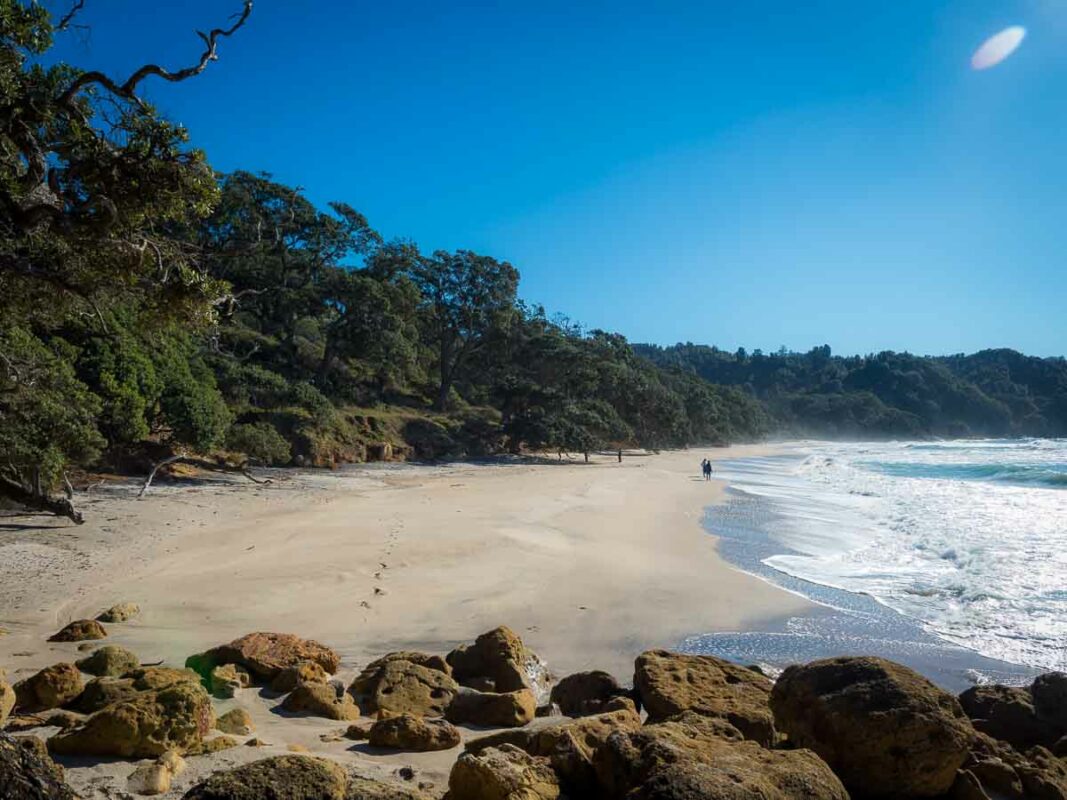
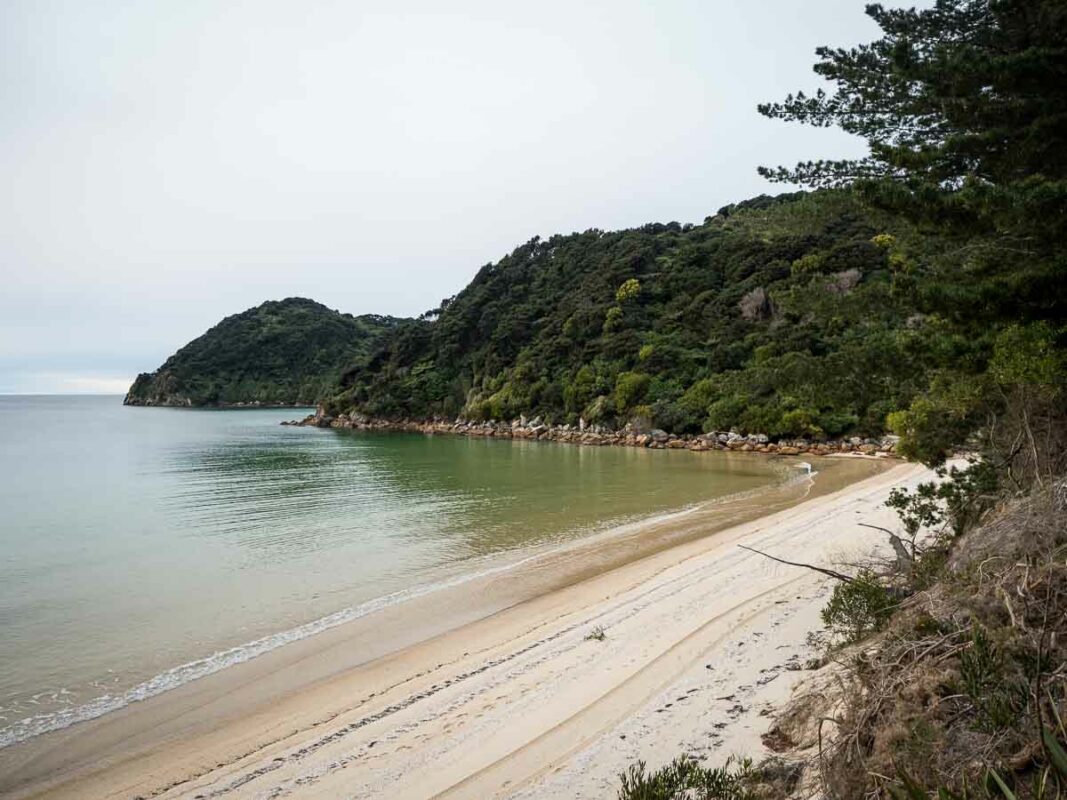
Day 2 – Whariwharangi Hut To Awaroa Hut
Once I got to Totaranui, I walked south for another hour until I reached Awaroa. This is where I encountered the first crossing.
Note: Awaroa Inlet Tidal Crossing
This is by far the largest and deepest crossing on the track. It’s wide and shallow and is located about an hour north of Awaroa hut or campsite.
Normally, you’d cross this section bang on low tide, with enought leewawy to cross up to 1.5hrs before or or after the tide change. Unfortunately we were running late (2hrs after low tide) and water was already rushing in. At its deepest i had to carry my pack on my head so it didnt get wet.


Side Trip:
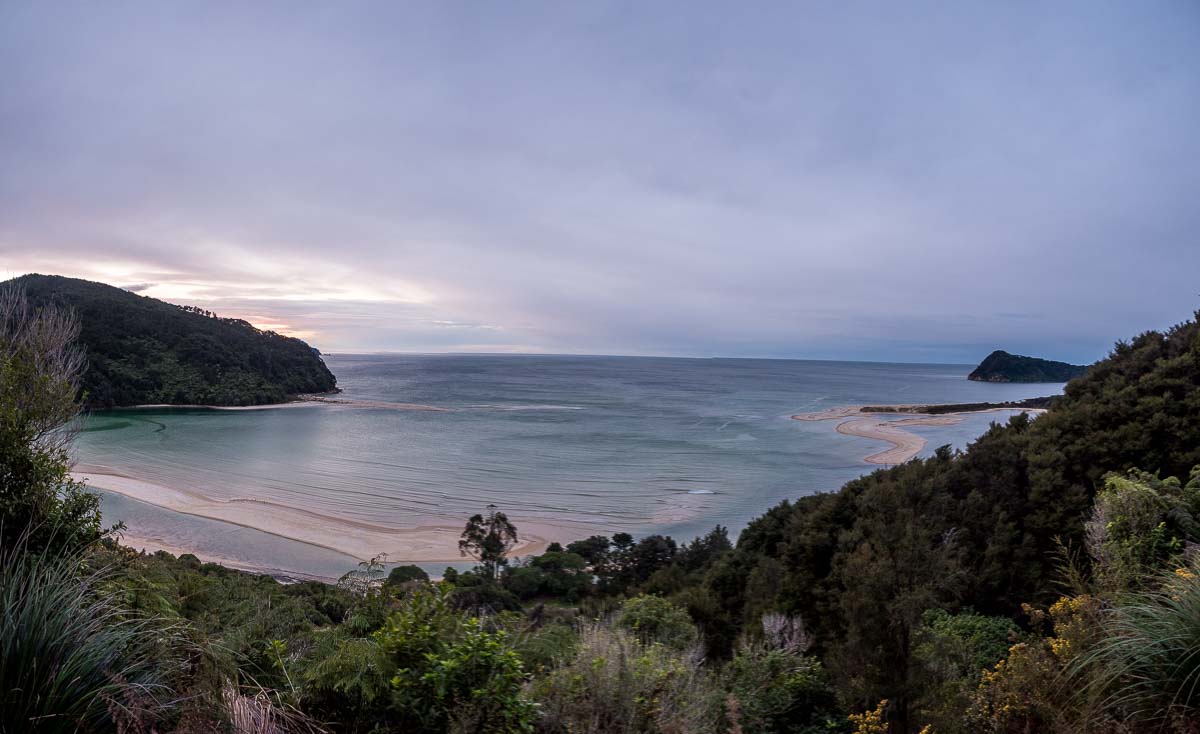
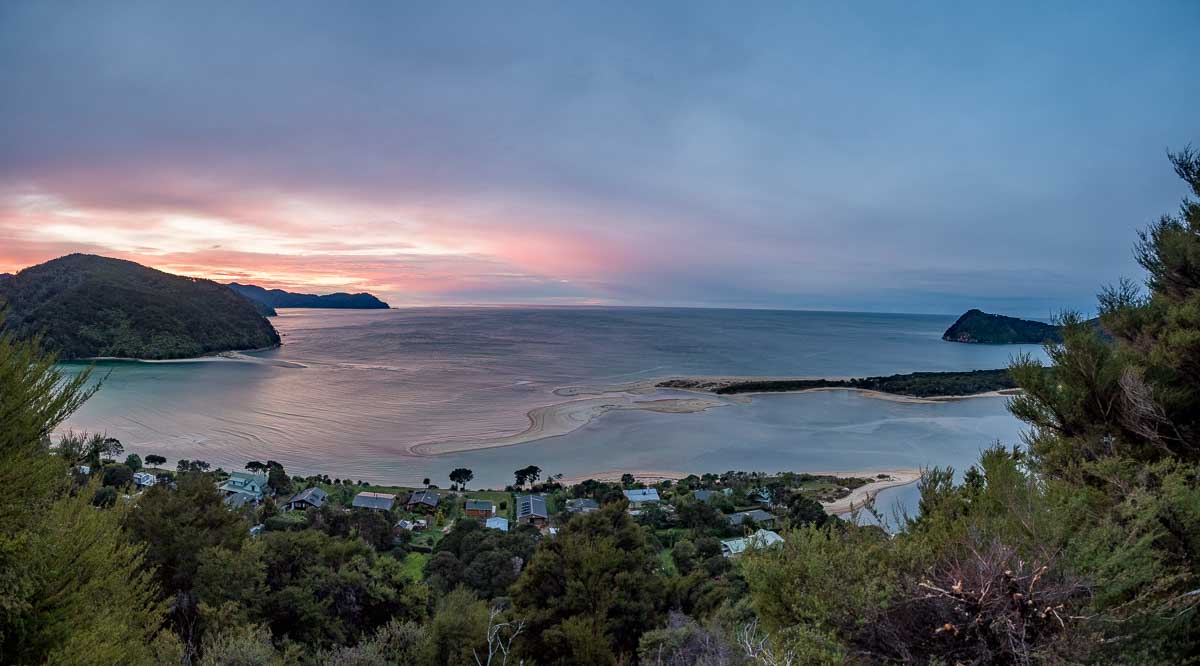
Day 3 – Awaroa Hut to Onetahuti Beach
Following an early morning rise and quick breakfast, I walked south through various landscapes until I reached two tidal crossings: Onetahuti Beach and Tonga Saddle. I made use of the water taxi because I spent time enjoying a swim and took time out to see some of the wildlife.



Onetahuti Beach to Bark Bay Hut and Campsite
From Onetahuti Beach, you’ll climb Tonga Saddle and descend to Bark Bay. This is a great spot to explore the nearby estuary–home to various birds and fish.
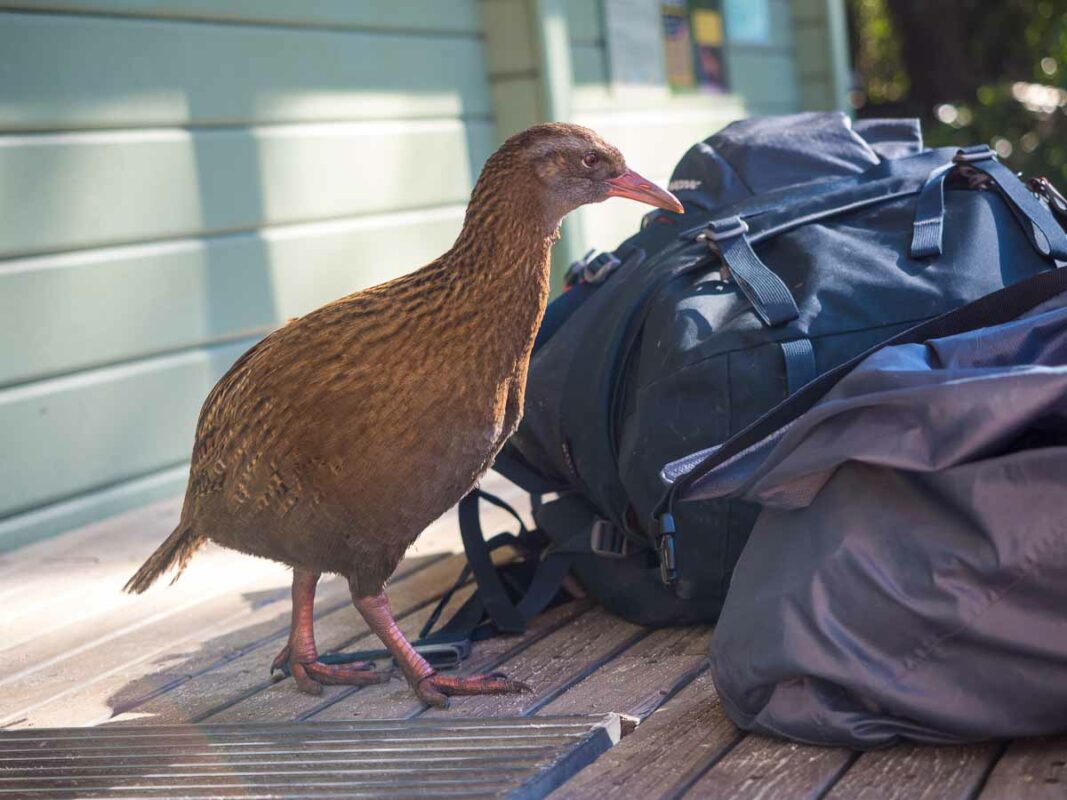
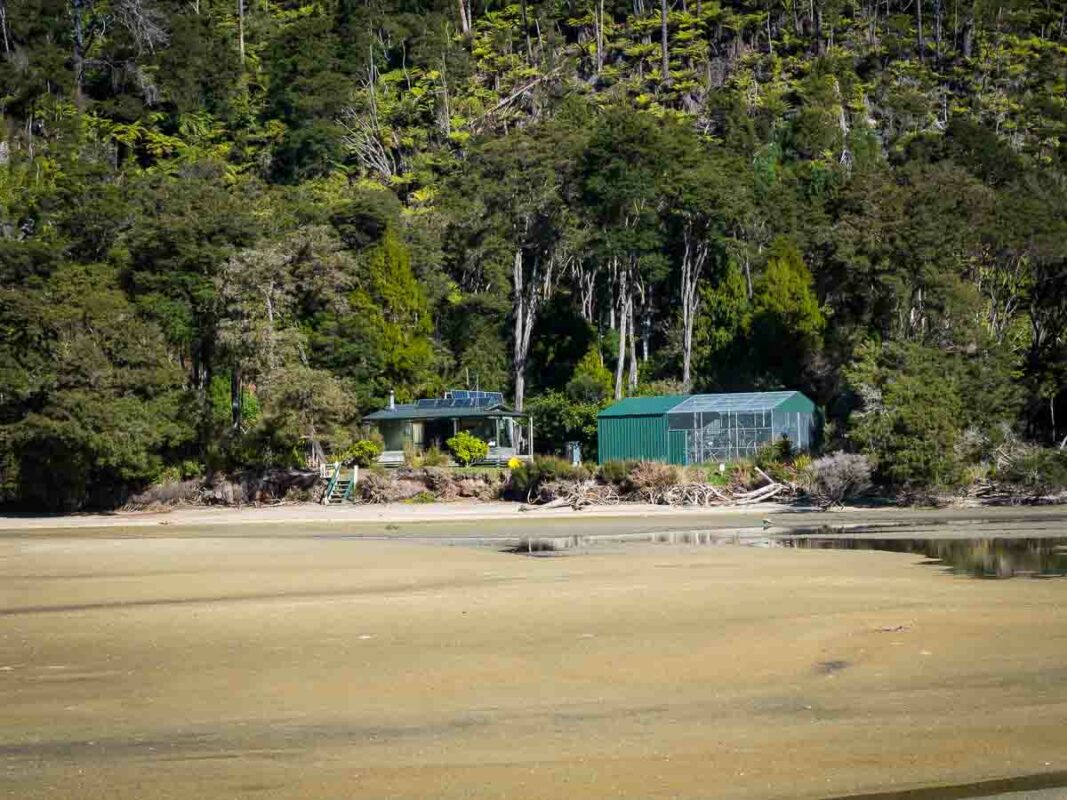
Bark Bay to Torrent Bay
This section is not only the busiest but also the longest and most rugged one. You’ll experience steep climbs and descents and several tidal crossings. The trail passes through some more bays, beaches, and even more side tracks. Once you’ve navigated this section, you’ll reach Torrent Bay.
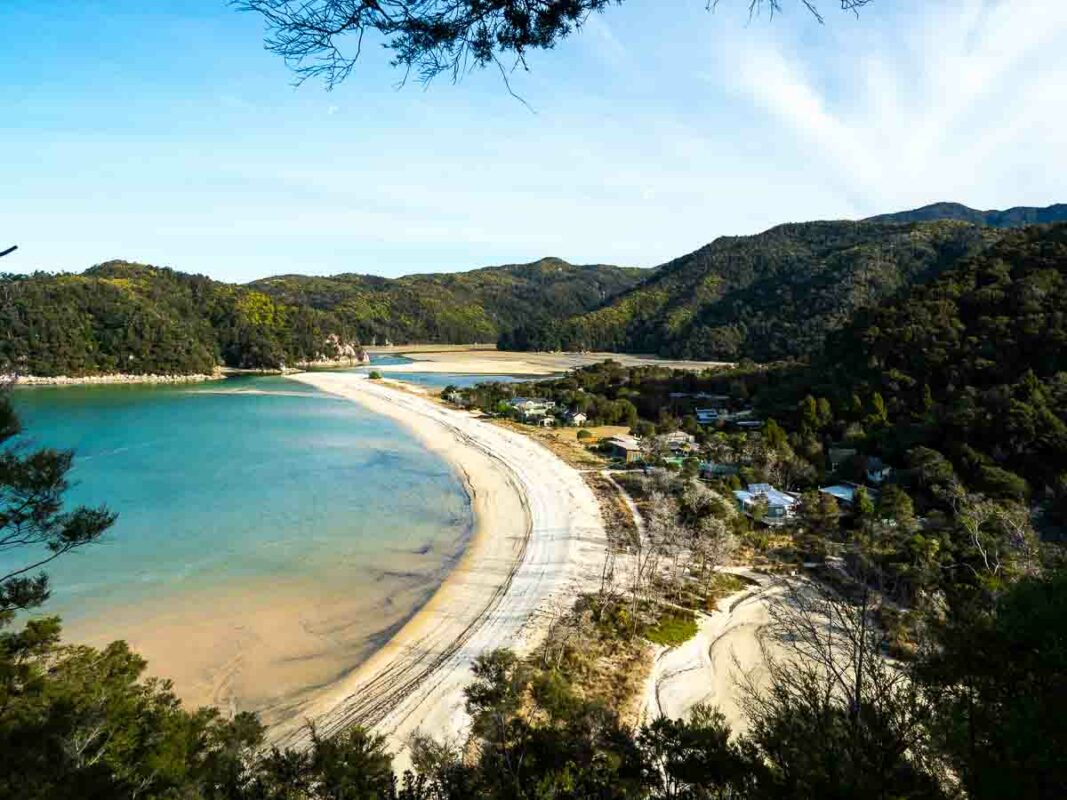
Side Trip: Cleopatra’s Pools
The best fresh water swimming spot in the Abel Tasman national park is Cleopatra’s Pool which includes a completely natural rock water slide.
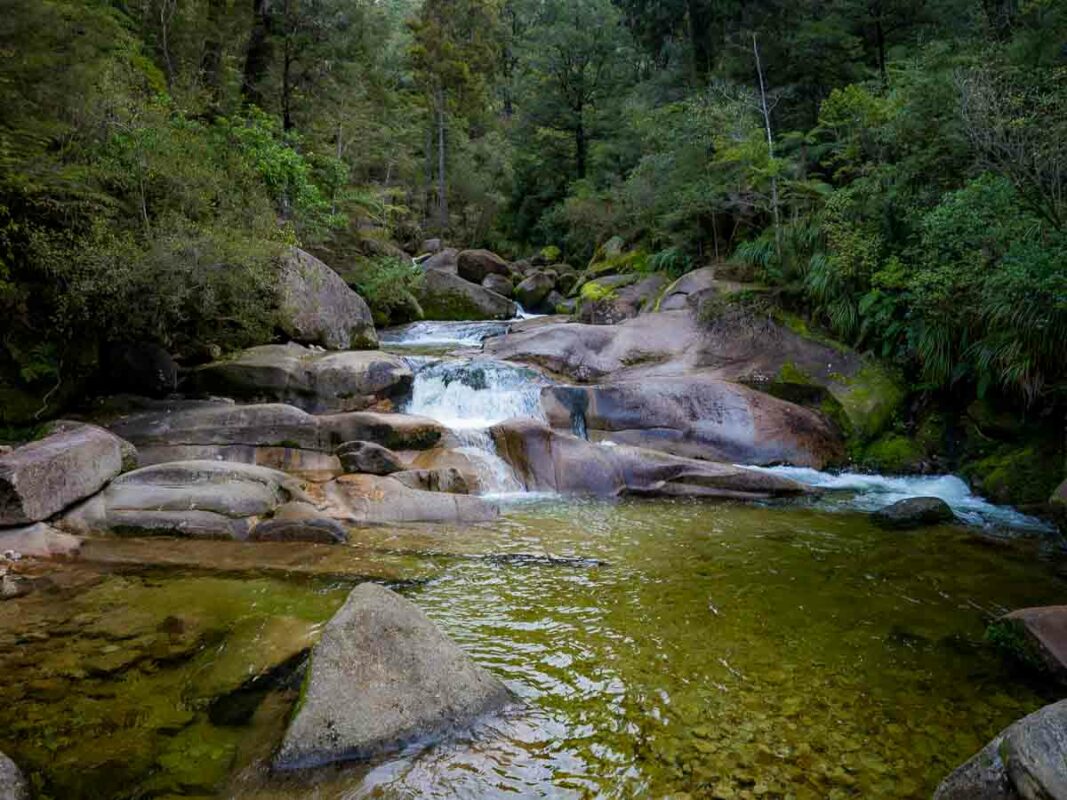
Torrent Bay to Anchorage
From Torrent Bay, you’ll walk along the beach for another 15 minutes until you reach the crossing. This section is an exhilarating way to experience the tide.
Day 4 – Anchorage To Marahau Town
As you head south, you’ll pass through some of the oldest and largest forests and also the most tranquil bays. You’ll also encounter one last tidal crossing. After crossing, you’ll continue along the coast for another hour until you reach Apple Tree Bay and descend to the town. This is where your adventure ends. You can buy some souvenirs, celebrate with a glass of beer, or travel back to your accommodation.
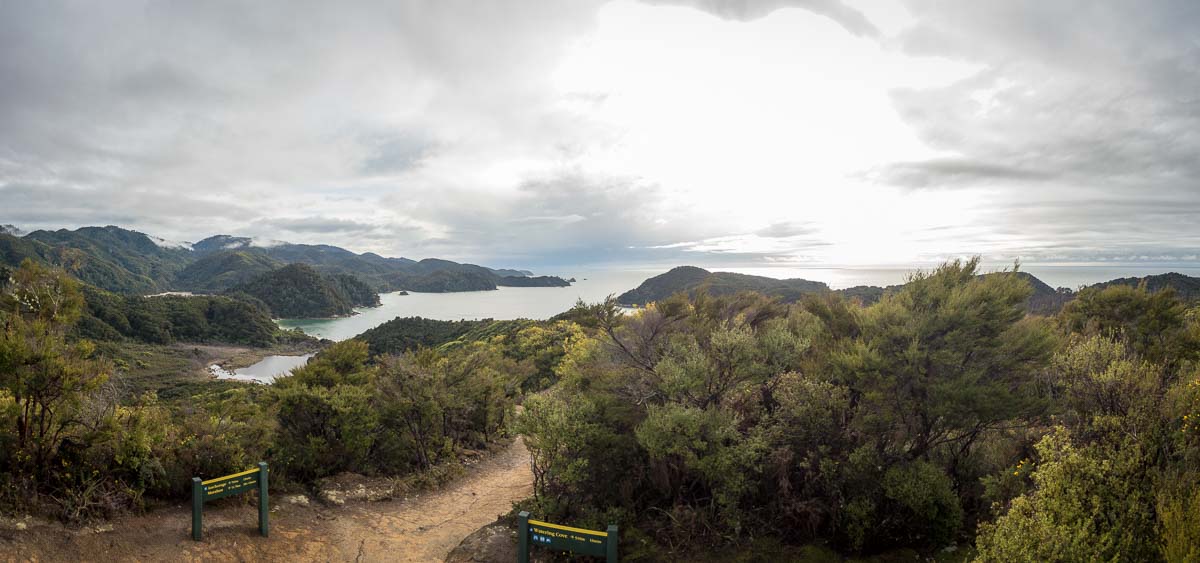
Tidal Crossings On The Abel Tasman
When hiking this track, you’ll deal with several tidal crossings. There are 4 main ones: Bark Bay Crossing, Torrent Bay Crossing, Awaroa Inlet Crossing, and Onetahuti Beach Crossing. They are not challenging or dangerous, but they can be cold and wet. I recommend you wear sandals or water shoes to protect your feet. You may also want to have some dry clothes or towels ready after you cross. The water level varies but you can expect to be submerged ankle to waist deep.

Bark Bay Crossing
Bark Bay Crossing is a narrow and shallow channel that connects with Tonga Island. It’s located about an hour south of Bark Bay hut or campsite.
Torrent Bay Crossing
Also narrow and shallow, this crossing connects with the mainland. It’s about 15 minutes away from the accommodation.
Awaroa Inlet Crossing
This is by far the largest and deepest crossing on the track. It’s wide and shallow and is located about an hour north of Awaroa hut or campsite.
Onetahuti Netahuti Beach Crossing
Onetahuti Beach is wide and can only be crossed within 1½ hours on either side of low tide. You’ll encounter it about an hour south of Onetahuti campsite.
Huts On The Abel Tasman Track
There are 4 huts on the Abel Tasman Coast Track: Anchorage, Bark Bay, Awaroa, and Whariwharangi. Most contain:
- Communal kitchen areas
- Dorm-style rooms lined with bunks
- Sink
- Toilets
- Water taps


Great walk season
Walking season runs from 1 October to 30 April and you can expect the trail and huts to be crowded. Because of the influx, the huts tend to be expensive. Here’s what you can expect to pay during this time:
- New Zealand citizens: Adult (18+ years): $38 per person, per night; Child (17 years and under): free but booking still required
- International visitors: Adult (18+ years): $76 per person, per night; Child (17 years and under): $38 per person, per night
Off-season
The off-season runs from 1 May to 30 September. You can expect the huts to be less crowded and less expensive. Here’s what you can expect to pay:
For all visitors: Adult (18+ years): $32 per person, per night; Child (17 years and under): Free
Camping In The Abel Tasman
There are 18 campsites ranging from small and secluded to large and lively.
Campsite fees
Peak season
- New Zealand citizens: Adult (18+ years): $16 per person, per night; Child (17 years and under): free.
- International visitors: Adult (18+ years): $24 per person, per night; Child (17 years and under): $12 per person, per night.
Off-season
For all visitors: Adult (18+ years): $16 per person, per night; Child (17 years and under): Free

Pack Transfers on the Abel Tasman Track
If you don’t want to carry your heavy backpack while walking the path, you can arrange for a pack transfer service with a water taxi company. A few reliable ones include:
- Abel Tasman Aqua Taxi
- Abel Tasman Sea Shuttle
- Wilson’s Abel Tasman
They will pick up your pack from your departure point and deliver it to your next destination on the track. You can also store excess luggage with them while on the track. The pack transfer fees vary, but they are usually around $10 to $15 per pack per day.

Frequently Asked Questions
How long does it take to walk Abel Tasman?
It usually takes 3 to 5 days to complete the Abel Tasman track.
Are there toilets on the Abel Tasman walk?
There are toilets on the Abel Tasman Walk. You can find them at every hut and campsite, and some of the water taxi stops and picnic areas.
Do you need tramping boots for Abel Tasman?
You don’t need tramping boots for Abel Tasman. The track is mostly flat with gentle climbs and descents. But I recommend you wear comfortable and sturdy shoes suited for hiking and all weather conditions. I hiked at the Abel Tasman in jandals (flip flops) so it’s pretty mild terain.
What do you wear to the Abel Tasman walk?
You can wear any comfortable clothing that allows you to adjust to different levels of warmth and coolness.
Abel Tasman vs Queen Charlotte Track
The main difference between the Abel Tasman Track and the Queen Charlotte Track is that the former is 60 km long and can be walked in 3 to 5 days, while the latter is 70 km long and can be walked in 4 to 5 days. The Abel Tasman track is gentle, while Queen Charlotte is hilly and rugged, with some steep climbs and descents. Lastly, Abel Tasman has four tidal crossings and Queen Charlotte track has none, but it has some sections exposed to strong winds and waves.
Can you drive in Abel Tasman National Park?
You can’t drive in Abel Tasman National Park. There are no roads or vehicles allowed in the park, except for some service vehicles used for maintenance or emergency purposes.
New Zealand Travel Planning Cheatsheet
🚑 Should I buy travel insurance for New Zealand?
100% YES! — New Zealand has “free” healthcare but it’s only for citizens. Tourists need travel insurance in case anything happens on your visit. Also be aware many policies won’t cover hiking as it’s a high risk activity! (that’s right, check the t&c’s on your complimentary credit card insurance)
I highly recommend World Nomads as you can get specific add-ons for the crazy activities you’re doing – and starts at just $7 a day!
🚙 Do you need to rent a car in New Zealand?
I’d reccommend it — Renting a car isn’t a necessity to get around in NZ with plenty of domestical flights and intercity busses. But, If you want to go on road trips or adventures outside of the major cities, you’ll need to rent a car. I always use Discover Cars for my rental bookings (it’s like Skyscanner for cars!) as they compare all availible providers for the best price.
Better yet, rent a van! This is the most cost effective way to see Aotearoa as you’re getting your transport and accomodation together as one! (Checkout my reccommended van rentals here)
📲 Will my phone work in New Zealand?
You’ll need to get a local SIM card when in New Zealand, which is super easy and doesn’t require ID. Spark generally has the best coverage and you can get pre-paid plans for around $30 for 30 days.
Alternativly – I now always use Airalo when travelling. This app generates an eSIM that will work the moment you touch down. It costs slightly more than a local SIM but the convenience is well worth it. You can signup here
💸How do you pay for thing in New Zealand?
Cash has gone out of fashion in New Zealand, so you’ll be able to pay for almost everything with EFTPOS / Debit / Credit Card. Paywave (contactless payments) is very common, but vendors who accept American Express cards are not (so bring a backup!).
I personally use Wise for all my international money needs as they only convert the funds when you may payment and offer a much better spread (margin on the true exhange rate) than the banks do. They also provide free deibit cards for your account!
🏩 What’s the best way to book my New Zealand accommodation?
My go-to for Kiwi hotels is Booking.com. For hostels, I use Hostel World. If you want a home-y feeling, check out AirBnB.. but don’t expect prices to be that much cheaper than hotels.
✈️ What’s the best site to buy flights to New Zealand?
For finding cheap flights, I recommend Skyscanner. Once you find the flight you’re looking for, I’d then suggest booking directly with the carrier (even if it costs a few $$ more than with one of the agreggators/agencies).
💧Can you drink the water in New Zealand?
Yes — everywhere in New Zealand you can drink the tap water. If you’re out hiking you can even drink the water from mountainous rivers and streams. I recommend a Brita Water Bottle and a packet of water purificiation tablets for long hikes and backcountry camping.
🎫 Do I need a visa for New Zealand?
NZ has a ‘traditional visa’ which is a document stamped in your passport allowing you to enter and stay in New Zealand for a specified period, while an “NZeTA” (New Zealand Electronic Travel Authority) is a travel authorization that allows certain passport holders to visit New Zealand without needing a separate visa – essentially a visa waiver for eligible travelers; meaning you need a full NZ visa if you don’t qualify for an NZeTA based on your passport and travel intentions.

